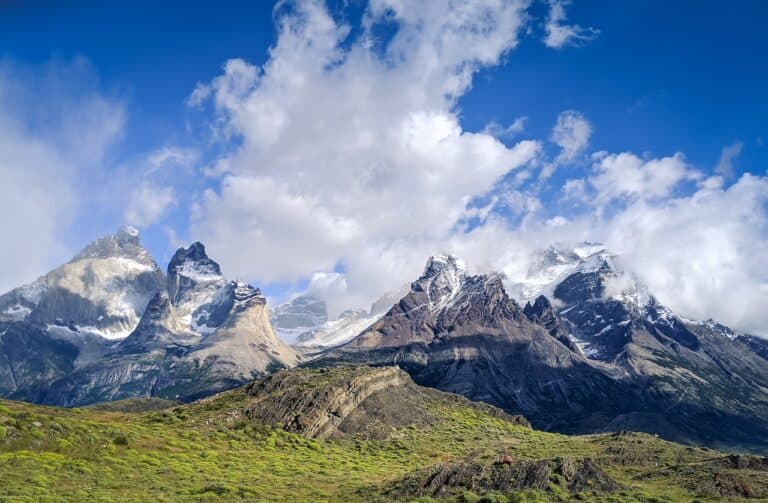Plug For Chile: What You Need To Know

What is the plug for Chile? Before you travel, check the information below to make sure your electronic devices are compatible with the outlet type and voltage.
Electrical Summary
Chile uses outlet types C, L at a voltage of 220V and a frequency of 50 Hz.
Plug Compatibility: Type C, L
Voltage: 220V
Frequency: 50 Hz
Type C

Type L

Can North Americans use Electronics in Chile without an Adapter?
No! North Americans will need an adapter for the outlets and a transformer for the voltage when traveling to Chile. North Americans device plugs will not work with the outlet types in Chile. Also, the voltage in Chile is different from North American voltages.
Can Europeans use Electronics in Chile without an adapter?
Europeans do not need a transformer when traveling to Chile. The voltage in Chile is the same as in Europe. However, Europeans may need a travel adapter when traveling to Chile.
What Outlet does Chile Use?
Type C

Type L

Type C plug sockets are used in Europe, Africa and Asia. They have two round pins and no grounding pin. These plugs are typically used with devices that have a voltage of 220-240V.
Type L plug have three round pins and a grounding pin. These plugs are typically used with devices that have a voltage of 220V.
Is it safe to drink water in Chile?
We recommend always packing a filtered water bottle when traveling:
Travel Essentials
Be sure to check our list of travel essentials before your trip!
Should I get travel insurance when traveling to Chile?
It is generally recommended to get travel insurance when traveling to a different country. Travel insurance can provide financial protection and peace of mind in case of unexpected events, such as medical emergencies, trip cancellations, lost or stolen baggage, or other travel-related mishaps.
Travel insurance can cover various expenses related to your trip, such as medical expenses, emergency medical transportation, trip cancellation or interruption, lost or stolen baggage or personal belongings, and other travel-related expenses.
Before purchasing travel insurance, it’s important to carefully review the policy details, including the coverage limits, exclusions, and any applicable deductibles or copays. You should also make sure that the policy covers any activities or destinations that you plan to participate in or visit during your trip.
Travel Summary
Where is Chile?
Chile is a country located in South America, bordered by Peru to the north, Bolivia to the northeast, Argentina to the east, and the Pacific Ocean to the west and south.
How big is Chile?
Chile has an area of approximately 756,096 square kilometers (291,930 square miles), making it the 38th largest country in the world.
What time is it in Chile?
The main time zone is Chile Standard Time (CLT), which is 4 hours behind Coordinated Universal Time (UTC-4). However, some regions in the north and south of Chile, such as Easter Island and the Magallanes Region, observe different time zones.
What is the capital of Chile?
The capital of Chile is Santiago.
What language is spoken in Chile?
The official language of Chile is Spanish.
What to do in Chile?
Chile is known for its stunning natural landscapes, including the Andes Mountains, Atacama Desert, and Patagonia region. It is also famous for its wine production, particularly in the central valleys surrounding Santiago. Additionally, Chile is known for its rich cultural heritage, which includes pre-Columbian art and architecture, as well as modern contributions to the arts and literature.
The economy of Chile is characterized by a strong free-market system and is highly dependent on exports, with copper being its main export commodity. Other important sectors include forestry, fisheries, and tourism.
Chile is a democratic republic, with a president as the head of state and a multi-party system. The country has a bicameral legislature, consisting of the Senate and the Chamber of Deputies.
Chile is considered one of the most stable and prosperous countries in Latin America, with a high standard of living and a strong commitment to social welfare programs. However, the country also faces a number of challenges, including income inequality, environmental concerns, and ongoing social unrest related to demands for greater economic and political equality.
In recent years, Chile has been a leader in promoting renewable energy and combating climate change, with a goal of generating 100% of its electricity from renewable sources by 2040. The country is also known for its world-class wine industry, cultural heritage, and vibrant arts scene.
Overall, Chile is a fascinating and dynamic country with a rich history, diverse geography, and a strong commitment to democracy and social progress. While it faces significant challenges, its people and government continue to work towards creating a more equitable and sustainable society.
Traveling to another country? Check out our Countries page for more info.